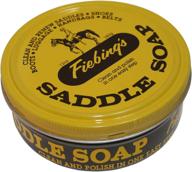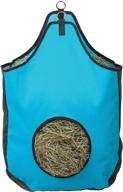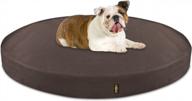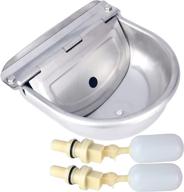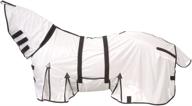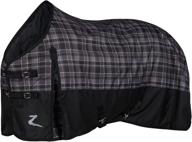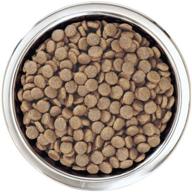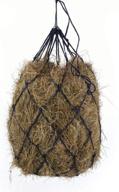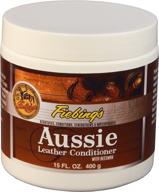How to choose the right size dispenser for your large dog?
Choosing the right sized automatic pet food dispenser is important to ensure your large dog is fed properly. Here are some tips on selecting the best size dispenser for your big furry friend:
Consider your dog's weight and daily food intake
Look at the feeding guidelines on your dog's food packaging to see how much they should be eating each day. The dispenser needs to hold at least that amount of food.
- For dogs 70-90 lbs aim for a 10-15 lb capacity dispenser
- For dogs 90-110 lbs look for a 15-20 lb capacity
- For dogs over 110 lbs choose a dispenser with 20+ lb capacity
Factor in kibble size and shape
Larger kibble pieces or oddly shaped kibble takes up more space. A dispenser rated for 20 lbs of small bite kibble may only hold 15 lbs of large breed chunks. Check kibble dimensions and adjust capacity if needed.
Allow room for a few extra meals
It's a good idea to have the dispenser hold at least 1-2 more meals than your dog eats daily. This gives you a buffer in case you are late refilling.
Get a dispenser with an adjustable feed setting
This allows you to fine tune the food amounts. Start with the recommended portions then tweak as needed based on your dog's needs.
Choosing a properly sized dispenser prevents overfeeding and ensures your big dog stays healthy and fit. Aim for a dispenser that holds more than their daily intake and offers adjustable portions.
How to set up the dispenser to dispense the right amount of food?
Setting the right food portions in your automatic pet feeder ensures your dog gets the calories they need without overeating. Follow these steps to program the proper pet food amounts:
Check the feeding guide
Consult your dog food bag's feeding recommendations based on your dog's weight. This gives you a starting point for how much to feed. An example is below:
| Dog Weight | Daily Food Amount |
| 70-90 lbs | 6-8 cups |
| 90-110 lbs | 8-10 cups |
Divide into meals
Divide the total daily amount into the number of meals you want dispensed. For two meals a day, program half the amount at each feeding time.
Adjust for activity level
Active dogs may need more food. Add 10-20% more for dogs with higher energy levels. Couch potato pups may need slightly less.
Set portion amount
Use your dispenser's controls to set the cup amount for each meal time. Many allow you to program different amounts for different feeds.
Monitor and adjust
Weigh your dog weekly and watch their body condition. Increase portions if they lose weight. Decrease if they start gaining.
Setting the feeder correctly helps prevent obesity and lets your dog thrive. Program the recommended amounts then fine tune based on your pet's needs.
Top products in 🐴 Horse Stable Supplies
How to keep your pet's food fresh in the dispenser?
Keeping your dog's or cat's food fresh when using an automatic pet feeder avoids waste and ensures your pet gets nutritious meals. Follow these tips:
Buy an airtight dispenser
Look for a feeder with a sealed hopper that doesn't let air, bugs or moisture in. This prevents contamination and staleness.
Store unused food properly
- Use an airtight pet food container
- Refrigerate or freeze to prolong freshness
- Put oldest food in dispenser first
Clean regularly
Every few weeks, empty the dispenser and wash with mild soap and water. Rinse thoroughly to avoid residue.
Check for stale food
Inspect food in the feeder. If moist, moldy or has an off smell, empty the dispenser and clean before refilling.
Use fresh food
- Avoid filling with food that's been sitting out
- Don't use food past expiration date
- Discard bits stuck in feeder that could go stale
Consider a mini fridge dispenser
For ultimate freshness, use an automatic feeder with a built-in refrigerator. This keeps food chilled.
Feed perishable foods separately
Wet food or leftovers that spoil quickly are best fed outside the dispenser.
With a little care and planning, your automatic pet feeder can serve up fresh, appetizing meals. Keep an eye on food quality and cleanliness so your pet always enjoys a nutritious diet.
How to train your dog to use an automatic dispenser?
Switching your dog to an automatic feeder takes some training but is worth it for convenience. Follow these tips to help your dog learn to use their new automatic feeding station:
Start slow
- Begin by placing your dog's empty bowl in the dispenser
- Reward with treats when they approach and eat around the dispenser
- Gradually add small amounts of food into the bowl
Supervise initial feedings
When you first put portions in the dispenser, stay to monitor. Encourage and reward eating from the new feeder.
Keep meals low stress
Make sure the area is peaceful when introduing the feeder. Limit noise and distractions.
Stick to a schedule
Program the feeder around your dog's normal meal times for consistency.
Use part of their ration at first
- Give some food in the dispenser and rest separately
- Over several weeks increase the dispenser portions
Praise success
Verbal praise and tasty treats help reinforce using the new feeder!
Be patient
Some dogs take to auto-feeders right away, while others need 2-4 weeks of training. Stay consistent.
With positive reinforcement and gradual exposure, your dog will learn to access their meals from the automatic dispenser. Proper training ensures the transition goes smoothly.
How to clean and maintain the dispenser properly?
Regular cleaning and maintenance keeps your automatic pet feeder working properly and prevents mold or food buildup. Follow these tips:
Check manufacturer instructions
Consult your product manual for any specific cleaning recommendations or warnings. For example, some may advise against submerging the whole unit in water.
Unplug before cleaning
Always unplug the feeder from the power source before wiping down or washing to avoid electric shocks.
Brush out debris frequently
Use a soft brush to sweep out any bits of kibble, dust or pet fur that accumulate in the feeding bowl or hopper. This helps prevent clogging.
Wash parts after emptying
When the feeder is empty, disassemble parts that come in contact with food. Wash in hot, soapy water. Rinse and air dry fully before refilling.
Sanitize monthly
Once a month, sanitize feeder parts by soaking in a vinegar and water solution (1 cup vinegar per 1 gallon water) for 15-20 minutes. Rinse thoroughly.
Check for damage
Inspect the power cord, dispenser mechanisms, buttons, and bowl/hopper for any cracks or malfunctions. Order replacement parts if needed.
Keep batteries fresh
For battery powered units, change batteries every 6-12 months or when low power is indicated. Always remove old batteries.
With regular care and cleaning, your automatic feeder will dispense meals reliably for years. Basic maintenance prevents malfunctions and keeps food fresh.
How to troubleshoot common issues with automatic pet feeders?
Automatic pet feeders are convenient but occasionally issues come up. Here are tips to troubleshoot some common problems:
Feeder doesn't turn on
- Check power connection and reset plug
- Replace old batteries
- Make sure outlet is working
- Test with different outlet
Meals not dispensing
- Ensure hopper has food
- Check for clogs from stale food or debris
- Clean out feeding bowl
- Test dispenser motor for jamming
Food amount is incorrect
- Adjust portion settings
- Calibrate dispenser per instructions
- Check for dispensing motor issues
Pet is afraid of the feeder
- Train slowly with treats and praise
- Reduce noise by oiling turning parts
- Place in peaceful location during training
Feeder battery dies too quickly
- Replace with new high quality batteries
- Make sure power save mode is enabled if available
- Only press buttons when necessary
Fixing minor issues can save you money compared to replacing the whole feeder. But if problems persist after troubleshooting, contact the manufacturer for repair or warranty help.
How To Properly Clean And Maintain Your Buddeez Pet Food Dispenser?
Properly cleaning and maintaining your Buddeez pet food dispenser is important to ensure your pet's food stays fresh and the dispenser stays in good condition. Here are some tips to help you keep your dispenser clean and well-maintained:
What Cleaning Products Should Be Used To Clean The Buddeez Pet Food Dispenser?
The Buddeez pet food dispenser can be cleaned using simple household cleaning products. Here are some cleaning products that can be used to clean the dispenser:
Avoid using abrasive cleaners or scrubbers that could scratch or damage the dispenser. It is important to rinse the dispenser thoroughly with clean water and dry it completely before refilling it with food. Regular cleaning and maintenance of the dispenser can help keep it in good condition and ensure your pet's food stays fresh.
Another interesting products
Are There Any Cleaning Products That Should Be Avoided When Cleaning The Buddeez Pet Food Dispenser?
There are no specific cleaning products that should be avoided when cleaning the Buddeez pet food dispenser. However, it is recommended to avoid using abrasive cleaners or scrubbers that could scratch or damage the dispenser. It is important to rinse the dispenser thoroughly with clean water and dry it completely before refilling it with food. Regular cleaning and maintenance of the dispenser can help keep it in good condition and ensure your pet's food stays fresh.





